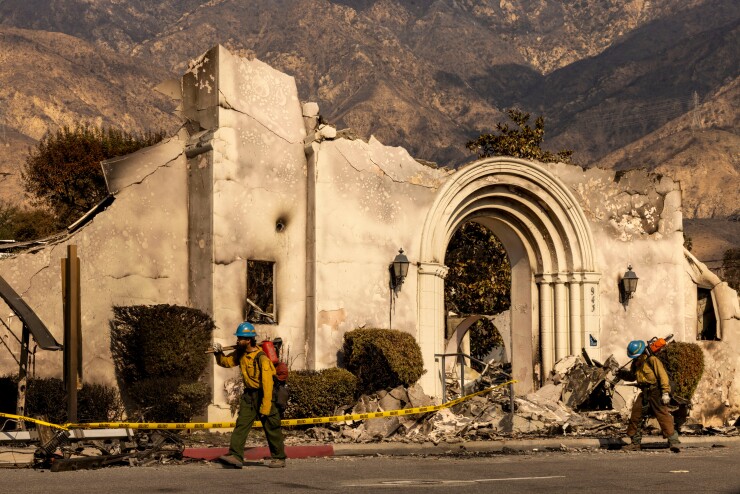
The Los Angeles County Board of Supervisors asked the chief executive's office to draft a plan to restructure the county's Office of Emergency Management based on a consultant's review of January's devastating wildfires.
The 5-0 vote on the recommendations came after a several-hours long meeting in which the supervisors quizzed Erin Sutton, a partner with McChrystal Group, the consulting firm hired to review the county's actions in the aftermath of the Palisades and Eaton wildfires.
The
The McChrystal
As part of its presentation, McChrystal reported how multiple, simultaneous fires had erupted across the county, fueled by hurricane-force winds that grounded all firefighting aircraft, created power outages, and made nighttime aerial surveillance impossible on the critical night of Jan. 7.
"I called for this independent review to make sure we had a clear, fact-based look at how alerts, warnings, and evacuations were handled," said County Supervisor Kathryn Barger. "This isn't about pointing fingers. It's about learning lessons, improving safety, and restoring public trust."
The review, commissioned by the board on Sept. 28, found that a series of weaknesses, including "outdated policies, inconsistent practices and communications vulnerabilities," hampered the effectiveness of the county's response.
"While frontline responders acted decisively and, in many cases, heroically, in the face of extraordinary conditions, the events underscored the need for clearer policies, stronger training, integrated tools, and improved public communication," the report said.
The Office of Emergency Management, which is responsible for planning and responding to emergencies in the county, works closely with the county's fire and sheriff's department. The office serving the county of almost 10 million has a staff of 37 people, compared to 43 employees in San Diego and more than 200 in New York City, the consultant said, pointing to those cities as having more effective OEM systems than Los Angeles.
The 132-page report covered the county's emergency response protocols and lapses in its system, but McChrystal was criticized by county supervisors for failing to include information from non-county agencies also involved in fire response.
Sutton responded that her firm had reached out to those agencies, but they failed to respond to her firm's queries.
McChrystal has also been selected to conduct a second comprehensive review of recovery and repopulation efforts after both fires.
Los Angeles County Sheriff Robert Luna and Los Angeles County Fire Chief Anthony Marrone described in their testimony the agencies need for updated equipment and improved communications systems ahead of the next disaster.
Both public safety leaders lauded the bravery of their workers.
"We had deputies working four and five shifts consecutively," Luna said. "They refused to go home. They saved thousands of lives. They didn't wait for orders to take action. They began to evacuate areas ahead of orders. And the smoke was bad. There were black and whites whose tires were on fire."
As far as the OEM is concerned, the restructuring evaluation requested through the motion introduced by Barger will evaluate best practices from similar departments in New York City, Chicago and San Diego to determine if the department should remain in the chief executive office, be moved to another department or be its own standalone department.
The chief executive's office was also asked to consider whether the county should identify and deploy non-digital emergency alert systems like community sirens, air horns, and vehicle-mounted loudspeakers in high-risk and communications-vulnerable areas. One of the failures was a dependence on evacuation orders through cell phones.





